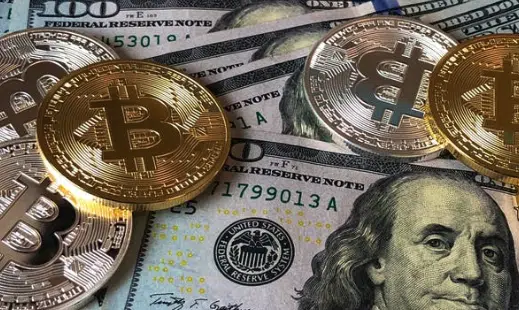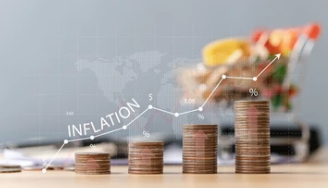TLDR
What is fiat money? In cryptocurrency, “fiat money” refers to traditional government-issued currency such as the US dollar or the Euro. The issuing government’s authority backs Fiat, not a physical commodity like gold and silver. This contrasts with cryptocurrency, a digital or virtual currency that operates independently of a country’s government or central bank.
On the face of it, fiat and crypto represent two different finance systems in modern economies, both with their strengths and weaknesses.
Under the surface, however, both currencies aren’t mutually exclusive. Many cryptocurrency platforms allow users to convert their fiat currency into crypto. The user’s preference determines the use case — they can use them together or separately.
Introduction
When we hear crypto, we immediately think of Bitcoin, Ethereum, altcoins, and blockchain. As you might already know, the crypto world, in reality, is much more complex, with many interconnected cogs and wheels that make up the whole ecosystem.
Knowledge of specific terminologies becomes invaluable as we learn more about crypto beyond the basics.
Let’s face it, as a crypto newbie or a seasoned trader. We’ve probably encountered a couple of new phrases or concepts that have stumped us, with none being the wiser.
In the wake of this, one thing’s clear — there are many new terms and concepts to learn. Today’s subject will illuminate an important question — What is fiat money in cryptocurrency?
In this article, we’ll cover everything you need to know about fiat (fiat currency), including what it means, its etymology, and its benefits and drawbacks. To better help you understand the practical implications of the “fiat in crypto notion,” we’ll also look at the relevance of fiat in crypto while giving you an outline of how fiat and crypto compare.
Understanding Fiat in Crypto

A government or central bank decree backs Fiat currency, a form of currency. It has no intrinsic value beyond what the issuing government or central authority established. It is typically used in day-to-day transactions and is the most widely accepted currency.
Several factors determine the value of fiat currency, but the primary one is the market’s supply and demand. Government agencies, the federal reserve, provincial governments, and central banks regulate the money supply. For instance, the federal reserve and the federal government regulate the money supply in the United States dollar.
On the other hand, various factors determine demand, including the country’s economy, government, business cycle, the strength of other currencies, and the expectations of investors and consumers.
In practice, the major currencies, including the. The u.s dollar, the Euro, and other major world currencies like the Japanese yen, Chinese yuan, etc., are fiat currencies.
Why is it called fiat currency?
The term “fiat currency” originates in 11th-century China, primarily in the Yuan, Tang, Song, and Ming dynasties, where paper money was first made legal tender in history.
The term “fiat” comes from the Latin word “fiat,” which loosely translates to “let it be done” or “may it happen.” Essentially, this refers to the greater control that government regulations have over economic variables and how governing entities legally allow the use of fiat currency.
Fiat currency use case
In the global economy, digital currencies require a valuation in fiat currencies because they lack the backing of physical assets like gold and silver, making fiat currency essential for displaying and interpreting their value.
Furthermore, they serve as a baseline reference value. Displaying digital currencies in fiat money allows users to comprehend the importance of digital money and make informed investment decisions.
If you trade cryptocurrencies, you may frequently come across two terms related to fiat: fiat on-ramp and off-ramp. The term “fiat off-ramp” refers to converting cryptocurrency to fiat.
Off-ramp can also refer to digital trading assets for other products and services. On the other hand, you’ll have to use the fiat on-ramp approach if you wish to convert your cash to cryptocurrency.
Fiat currencies and paper money

Fiat currency can also exist in paper money like dollar bills. Paper money is a physical form of fiat money (physical money), with paper bills also issued by government-authorized banks or the country’s own central bank or federal reserve bank.
Representative money

Legal tender representative money is another currency that lacks intrinsic value but has acceptance due to its nominal commodity nature backed by a bank’s promise to pay. It should be noted that although representative money can be seen as a type of fiat currency, not all fiat currencies are representative money.
Commodity money

The primary hard money alternative to fiat currencies in most developed countries is commodity money. Commodity money is typically a physical item such as gold or silver widely accepted as payment. Silver and gold coins are the most common form of commodity-based money.
Advantages Of Fiat Currency
Using fiat currencies comes with certain benefits. Let’s quickly review some of them.
1. Widespread acceptance
Fiat money is widely accepted as a medium of exchange in most countries, making it easy to use in day-to-day financial transactions and everyday purchases. This means merchants, businesses, and individuals are willing to accept it as payment for goods and services. This is particularly important for large transactions and international trade.
2. Liquidity
Fiat (paper) money is easily exchanged for goods and services and converted into other currencies. This makes it ideal for transactions and for holding as a store of value. It also means it can be easily used to purchase goods and services internationally.
3. Stable value
The value of fiat money is generally more stable than other forms of currency, such as cryptocurrencies, which can experience significant fluctuations in value. Leveraging said stability. It is easier for individuals and businesses to plan and budget for the future.
4. Legal tender
Fiat or paper money is considered legal tender, meaning merchants and businesses are legally required to accept it as payment for debts. This legal obligation provides businesses and individuals with a certain level of protection against fraud and deceit when using legal tender to purchase goods and services.
5. Centralized control
Central banks control the money supply and interest rates, which can help stabilize the economy and curb inflation. This control over monetary policy and credit supply allows the government to respond to economic conditions and implement monetary policies that can help stabilize the economy.
6. Ease of use
Unlike gold and other physical assets, Fiat money is easy to carry and use. It is small and lightweight, making it easy to transport and use in daily transactions.
7. Monetary policies
Government can use fiat money as a tool for monetary policies to stabilize the economy. They can increase or decrease the money supply or change interest rates to help stabilize the economy during a recession or inflation.
8. Traceability
Fiat money has a traceable transaction history that can help detect and prevent fraud, money laundering, and other financial crimes.
9. Accessibility
Fiat money is easily accessible to the general public. Banks and financial institutions make it easy for individuals to open bank accounts and obtain cash. This creates a centralized system where everyone can participate in the economy.
Disadvantages Of Fiat Currency
While fiat money has many advantages, it also comes with certain drawbacks. Let’s take a look at some of the disadvantages associated with the use of fiat money to lead to a stable currency first.
1. Inflation
One of the main disadvantages of fiat money is inflation. In an economic depression, a sovereign state might be tempted to print more money to offset the financial deficit. Should this happen, the money supply will vastly exceed the demand, leading to an oversupply of a fixed value of fiat currency.

The end product of the above cycle is undoubtedly inflation. The extent of inflation depends on the severity of the currency oversupply.
2. Susceptibility to fraud
Fiat money is vulnerable to fraud and counterfeiting. Criminals and bad actors can create fake currency and use it to purchase or exchange it for real money. This can undermine the country’s economy’s stability and lead to a loss of confidence in the national currency itself.
3. Lack of intrinsic value
As physical commodities like gold or silver do not back it, fiat money holds no intrinsic value. This can make it more vulnerable to economic growth and downturns, climate, government policies, and inflation rates.
4. Dependence on government stability
The value and acceptance of fiat money as a legal tender depend on the issuing government’s stability and credibility. In times of economic or political instability, the currency’s value may decrease, and investors may have confidence in the nation’s currency itself.
5. Limited privacy
Recording and tracing transactions made with any legal tender can be a disadvantage for individuals who prioritize their privacy.
Now that we have defined crypto-fiat broadly, we can explore more specific questions, such as why cryptocurrency is needed when fiat currency is already in extensive use. What differentiates them?
Trusted Partners
Fiat vs. Crypto – Similarities
Both fiat currency and cryptocurrencies can serve as a medium of exchange, enabling individuals to buy goods and services. The primary function of any currency is to facilitate trade, and both fiat money and cryptocurrencies fulfill this role.
Both currency types hold value and are exchangeable for goods and services. Through various monetary policies, including interest rates and quantitative easing, the government and central banks set the value of the gold standard and fiat money. On the other hand, market supply and demand govern the value of cryptocurrencies.

Individuals can use both currency types as a store of value, enabling them to save and hold onto them with the expectation of increased worth over time. A bank account is where individuals can hold fiat currency, whereas digital wallets are where individuals can store cryptocurrencies. These two currencies also support online transactions and electronic payments.
Moreover, currencies share the similarity of being digital. Digital platforms such as online banking, mobile banking, and e-wallets enable individuals to conduct electronic transactions using digitized fiat money. Cryptocurrency transactions are entirely digital, conducted solely on digital platforms.
Individuals can use both fiat money and cryptocurrency globally to pay taxes, but compared to fiat money, the usage and acceptance of cryptocurrency for tax payments remain limited.
It’s important to note that while the similarities exist, their differences can be significant.
Fiat vs. Crypto – Key Differences

Here, we’ll be looking at what sets fiat apart from crypto. Let’s go.
Decentralization
No government or financial institution controls cryptocurrency since it is decentralized. Conversely, governments and central banks in other countries are responsible for their currency, issuing and regulating fiat currency.
Supply
Most cryptocurrencies have a limited supply, meaning there is a fixed value cap on the total amount in circulation. In contrast, fiat money can be printed or minted in unlimited supply by the issuing government or authority as needed.
Valuation
The market determines the value of cryptocurrencies with unlimited supply and demand. In contrast, the issuing authority determines the value of fiat money and can be influenced by various economic and political factors.
Anonymity
Cryptocurrency transactions are typically anonymous, unlike fiat currency transactions, which often involve tracing and documentation.
Security
Cryptocurrency transactions are secured through blockchain technology, making them resistant to fraud and hacking. Fiat money transactions are also secure but more susceptible to fraud and counterfeiting.
Final Thoughts
Fiat and crypto represent two different systems of finance, both with their strengths and weaknesses. Nevertheless, these systems aren’t mutually exclusive from one another.
Fiat in crypto provides an easy way for crypto traders to convert their cryptocurrency holdings into tradable fiat currency-backed ones. Crypto allows fiat holders to transact in a decentralized environment free of Centralized influence.
In conclusion, fiat currencies remain an essential part of the cryptocurrency landscape. And while digital currencies have the potential to revolutionize the way people store and transfer value, fiat currencies are still the foundation of the global financial system. They will continue to be for the foreseeable future.
As cryptocurrencies become more widely adopted, the need for fiat-denominated services will likely increase, and the two will continue to interact in a mutually beneficial way.
The term "fiat" comes from the Latin word "fiat," which loosely translates to "let it be done" or "may it happen." Essentially, this refers to the greater control that government regulations have over economic variables and how governing entities legally allow the use of fiat currency.
Fiat money is currency declared as legal tender by a government, lacking intrinsic or fixed value, and without tangible asset backing such as gold or silver.
Fiat currency is issued and backed by a government, while cryptocurrencies are digital and not issued by a government, bank, or other central authority.













